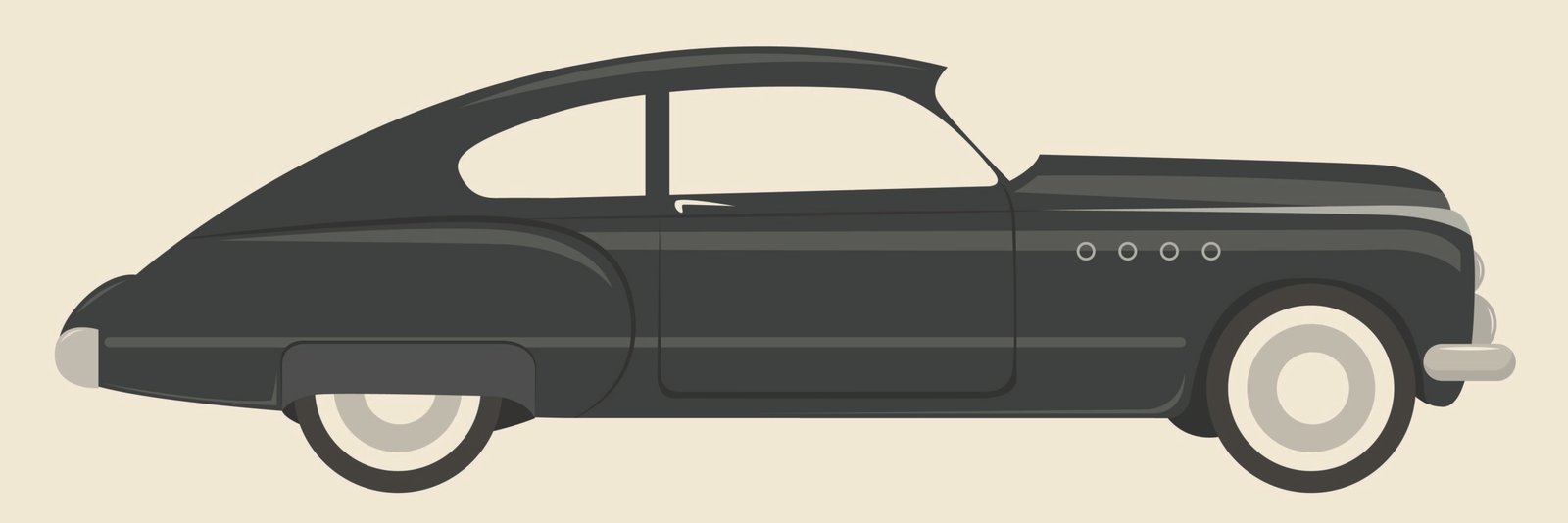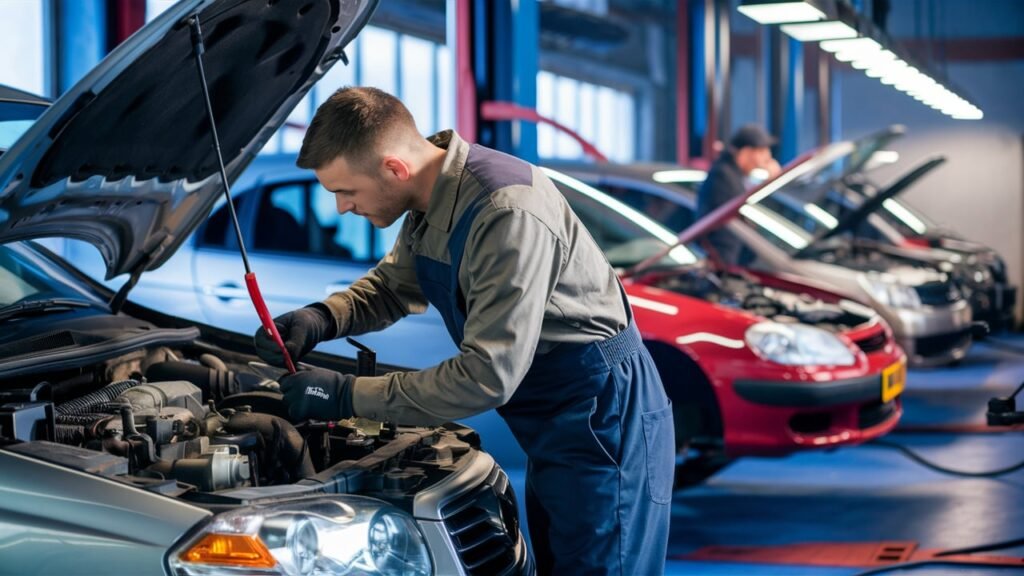
8 Signs You Need to Replace Your Brake Discs
Brake discs: the silent heroes of a vehicle’s braking system. While often overshadowed by their more vocal counterpart, the brake pads, these circular hunks of metal play a critical role in ensuring safe deceleration. If neglected, worn-out or damaged brake discs can jeopardize not only your car’s performance but also your safety on the road.
Picture this: as you press down on the brake pedal, hydraulic pressure is exerted, squeezing the brake pads against the spinning discs connected to your wheels. Friction ensues, converting kinetic energy into heat and ultimately slowing your car down. However, when these discs start showing signs of wear and tear, issues arise – from unwelcome vibrations to reduced braking efficiency.
In this detailed guide, we delve into 8 telltale signs that scream “replace those brake discs!” From squealing noises to uneven wear patterns, each indicator serves as a red flag signaling potential dangers lurking beneath your vehicle’s surface.
Discover how attending to these signs promptly can not only prolong your braking system’s lifespan but also safeguard both you and your passengers during every journey. Gear up for an expert analysis as we unravel the mysteries behind maintaining optimal braking performance. Keep reading to stay ahead of the curve – or should we say, the disc!
Sign 1: Excessive Vibrations When Braking.
When you feel excessive vibrations while braking, it could be a sign that your brake discs are worn out or damaged. These vibrations are often caused by the uneven wear or warping of the brake discs, leading to an uneven surface that affects the contact between the brake pads and discs.
For example, imagine driving down a hill and feeling your steering wheel shake as you apply the brakes – this could indicate warped brake discs causing the vibration.
Addressing this issue promptly is crucial to prevent further damage to your vehicle’s braking system. Ignoring these vibrations can result in accelerated wear on other components like brake pads and calipers, leading to more extensive repairs down the line.

Potential causes for such excessive vibrations can include inconsistent application of force on the brake pedal due to uneven disc surfaces or prolonged use without proper maintenance.
Furthermore, if your brake discs exhibit signs of uneven wear or warping, it is essential to have them inspected by a qualified professional. They can assess the extent of damage and recommend appropriate solutions, which may involve resurfacing or replacing the brake discs altogether. Think of it as addressing a small problem now before it escalates into a larger safety concern for both you and your vehicle.
Sign 2: Squealing or Screeching Noise While Braking.
When you hear your vehicle emit a high-pitched squealing or screeching noise upon applying the brakes, it might signal that your brake discs are due for replacement.
This audible warning often stems from the interaction between worn-out brake disc pads and the metallic surface of the discs. As the pads lose their material thickness and reach their wear limit, they can create this unpleasant noise as they make contact with the brake discs during braking.
Inspecting both the brake discs and pads is crucial when experiencing these noises to assess their condition accurately. This involves checking for signs of wear, measuring pad thickness, and examining the surface of the discs for any scoring or unevenness.
Ignoring these auditory cues can lead to further damage not only to the discs themselves but also to other components in your vehicle’s braking system, potentially resulting in more extensive repairs down the line.
To determine if replacement is necessary when encountering squealing or screeching noises while braking, consult a qualified mechanic or conduct a thorough examination yourself if you have sufficient automotive knowledge.
Promptly addressing this issue by replacing worn-out components can restore smooth and silent operation to your braking system, ensuring optimal performance and safety on the road.
Remember, regular inspections play a vital role in preemptively identifying such warning signs before they escalate into more significant problems that could compromise your vehicle’s braking efficiency.
Sign 3: Reduced Braking Performance.
Deteriorating brake discs not only compromise the safety of a vehicle but also impact its braking performance significantly. As brake discs wear out over time, the material thickness decreases, potentially leading to reduced heat dissipation and structural integrity.
Thinning brake disc material diminishes their ability to effectively absorb and dissipate the heat generated during braking, which can result in decreased stopping power. This reduction in thermal capacity can escalate the risk of brake fade, where prolonged or intense braking causes a temporary loss of stopping ability due to overheating.
Moreover, another critical factor contributing to reduced braking performance is the diminishing contact surface area between the brake pads and discs. As the brake discs wear down, their surface area available for friction with the pads decreases, impacting the overall braking efficiency.

The diminished contact area limits the generation of friction necessary for effective deceleration, thereby prolonging stopping distances and potentially compromising emergency braking situations. It is essential for car owners and mechanics to recognize these signs early on through routine maintenance checks to prevent any safety hazards associated with deteriorating brake discs.
Regular maintenance checks play a crucial role in identifying issues like reduced braking performance promptly. By inspecting the thickness of brake discs and assessing their condition regularly, potential problems related to decreased performance can be detected early before they escalate into more severe issues.
Addressing thinning brake disc material or diminished contact surface area promptly can help maintain optimal braking performance and ensure safe driving conditions for both drivers and passengers. Preventative actions taken based on these maintenance checks can extend the lifespan of brake components and contribute to overall vehicle safety on the road.
Sign 4: Visible Scoring or Grooves on Brake Disc Surface.
When you notice visible scoring or grooves on your brake disc surface, it is a telltale sign that your braking system needs attention. These marks are indicators of wear and tear resulting from friction between the brake pads and discs.
The presence of scoring compromises the smooth contact necessary for effective braking performance. Imagine driving on a rough road instead of a well-paved highway; the difference in experience is similar when your brake discs exhibit visible scoring.
It is crucial to measure the thickness of your brake discs and evaluate the extent of the scoring to determine if replacement is necessary. Just like using a ruler to assess a worn-out tire, measuring disc thickness provides an accurate gauge of how much material has been lost due to wear.

By inspecting the severity of the scoring, you can pinpoint areas where braking efficiency may be compromised. Think of scoring on brake discs like potholes on a road – they hinder optimal function and necessitate swift action.
Addressing scoring promptly not only ensures safe driving but also prolongs the lifespan of your vehicle’s braking system. By taking proactive measures such as regular inspections and timely replacements when needed, you can maintain peak performance and safety on the road.
Remember, just as smooth pavement allows for seamless travel, smooth brake discs enable effective stopping power – making it imperative to address visible scoring before it leads to more significant issues.
Sign 5: Overheating Brake Discs.
When brake discs undergo excessive heat due to prolonged or aggressive driving, they experience a condition known as overheating. Overheating brake discs can have severe consequences on the overall braking system of a vehicle.
One common repercussion is thermal cracking, where the extreme heat causes cracks to form on the surface of the disc. Additionally, overheating can lead to deformation of the disc itself, altering its shape and compromising its structural integrity. These outcomes directly impact braking effectiveness, putting both driver and passengers at risk.
To prevent the overheating of brake discs, proper cooling techniques are essential. Ensuring adequate airflow around the brakes can help dissipate heat efficiently during braking, reducing the chances of overheating.

Choosing high-quality materials for replacement brake discs is another preventive measure worth considering. High-performance brake discs designed to withstand elevated temperatures can offer improved durability and heat dissipation capabilities compared to standard discs, enhancing overall safety on the road.
For example, imagine a scenario where a driver frequently engages in spirited driving sessions on winding mountain roads. The continuous hard braking maneuvers generate substantial heat within the brake system, increasing the likelihood of brake disc overheating.
Without addressing this issue promptly by implementing proper cooling strategies or opting for specialized high-performance brake discs designed for aggressive driving conditions, the risk of thermal cracking or deformation remains heightened.
By understanding the implications of overheated brake discs and taking proactive measures to combat this issue, drivers can ensure optimal performance and safety while on the road.
Sign 6: Pulsating Sensation While Braking.
When you experience a noticeable pulsating sensation while applying the brakes, it might be a sign that your brake discs have become warped or distorted. This phenomenon occurs when the brake discs are no longer perfectly round due to wear or excessive heat.
As a result, the distorted shape of the brake discs creates an uneven contact patch between the brake pads and rotor surfaces during braking. This irregular contact leads to the pulsating feedback felt through the brake pedal while trying to slow down or stop.
Warped brake discs can significantly impact your vehicle’s braking performance and compromise overall safety on the road. The inconsistent contact between the brake components can lead to decreased stopping power and potentially dangerous braking situations, especially in emergency scenarios.
To properly diagnose this issue, it is advisable to seek professional inspection from a qualified mechanic who can assess the extent of warping and recommend replacement if necessary. Addressing warped brake discs promptly is crucial to ensure optimal braking efficiency and maintain safe driving conditions.

In some cases, visually inspecting the brake discs may reveal obvious signs of warping or distortion. However, since not all disc warping is easily visible, relying on professional expertise for a thorough evaluation is essential.
If diagnosed with warped or distorted brake discs, opting for replacement with new quality discs is key to restoring proper braking function in your vehicle. By addressing this issue proactively, you can avoid potential safety risks associated with compromised braking performance due to warped or distorted discs.
Sign 7: Uneven Wear Patterns on Brake Discs.
When you notice uneven wear patterns on your brake discs, it’s a clear indicator that they have surpassed their intended service life. This irregular wear can manifest in various forms, such as grooves or indentations along the surface of the disc.
Causes of this issue may stem from improper bedding-in procedures during installation, leading to an uneven distribution of friction material across the disc. Additionally, misaligned calipers can result in localized pressure points that accelerate wear on specific areas of the disc, causing irregular patterns to emerge over time.
Contaminated surfaces due to oil or debris can also contribute to uneven wear by disrupting the consistent interaction between the brake pads and discs.
The consequences of ignoring uneven wear on brake discs are not to be underestimated, as they directly translate into safety risks for both drivers and passengers. As the braking surface becomes increasingly inconsistent due to irregular wear patterns, the overall braking performance of the vehicle deteriorates significantly.
These worn-out discs compromise stopping power and responsiveness, potentially leading to longer braking distances and decreased control over the vehicle during emergency maneuvers. In extreme cases, severe uneven wear can escalate into rotor warping or even catastrophic failure, posing a grave danger on the road.
To address issues related to uneven wear patterns on brake discs effectively, it is crucial to conduct regular inspections and maintenance checks as part of your vehicle care routine. By identifying signs of uneven wear early on, you can take proactive measures such as replacing worn-out components and ensuring proper alignment of calipers to prevent future damage.
Remember that prioritize safety above all else when it comes to maintaining your vehicle’s braking system; addressing signs of uneven wear promptly can safeguard against potential accidents and ensure optimal performance when you need it most.
Conclusion.
In conclusion, recognizing the signs that indicate a need to replace your brake discs is crucial for maintaining optimal vehicle safety and performance. Through this guide, mechanics, automotive enthusiasts, car owners, and DIYers have learned about the key indicators that suggest brake disc deterioration.
From excessive vibrations and screeching noises to reduced braking power and visible wear patterns, each sign serves as a clear indication that immediate attention and potential replacement are necessary.
By heeding these warning signals and addressing them promptly through professional inspection and appropriate maintenance practices, individuals can ensure their vehicles’ braking systems operate at peak efficiency.
Regular monitoring of brake discs, coupled with proactive measures to address any issues identified, will not only enhance driving safety but also contribute to prolonging the longevity of the entire braking system.
Ultimately, staying vigilant for these signs equips individuals with the knowledge needed to make informed decisions regarding brake disc replacements and safeguard both passengers and drivers on the road.




